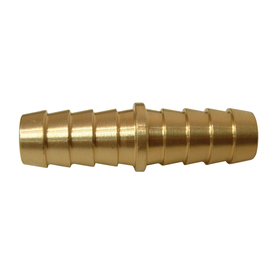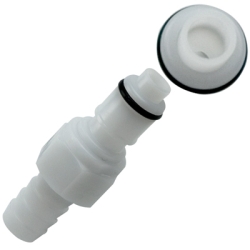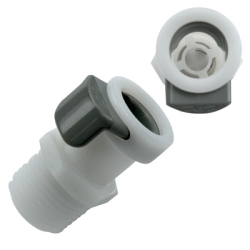As I'm converting over my fuel cell from the Gen 1 bike to the new Gen 3 I'm taking the opportunity to make sure my various fittings are flowing as much fuel as practical. While I know it's *supposed* to be a 3/8" system I've found several points along the line are likely 5/16".
Which gets me thinking that the that's the inner diameter of my fuel line, but various barbs, filters, valves, and buldhead fittings all go inside that 3/8" line and then have a different actual inner diamater. In fact, I've found actual measurements of pieces in my system (e.g. brass barb couplers) varying from 0.220" to 0.280".
So, now that it's become a longer story I'm wondering of anybody knows of an online resource for the inner dimensions of things that fit inside of things that are rated at dimensions like 3/8"? It's probably in a chart somewhere that shows 1/4", 5/16", 3/8", 1/2", etc. Or what's the name of the standard for things like brass barbs that I might be able to Google a little more intelligently?
I know I'm not going to get to an actual 0.375" flow with a 3/8" system, but I'm hoping to validate a theory that I can get to some figure closer to the 0.280" range by upgrading barbs, quick couplers, and fuel filter...which would be about 60% better flow than my old system.
Thanks.

Which gets me thinking that the that's the inner diameter of my fuel line, but various barbs, filters, valves, and buldhead fittings all go inside that 3/8" line and then have a different actual inner diamater. In fact, I've found actual measurements of pieces in my system (e.g. brass barb couplers) varying from 0.220" to 0.280".
So, now that it's become a longer story I'm wondering of anybody knows of an online resource for the inner dimensions of things that fit inside of things that are rated at dimensions like 3/8"? It's probably in a chart somewhere that shows 1/4", 5/16", 3/8", 1/2", etc. Or what's the name of the standard for things like brass barbs that I might be able to Google a little more intelligently?
I know I'm not going to get to an actual 0.375" flow with a 3/8" system, but I'm hoping to validate a theory that I can get to some figure closer to the 0.280" range by upgrading barbs, quick couplers, and fuel filter...which would be about 60% better flow than my old system.
Thanks.






